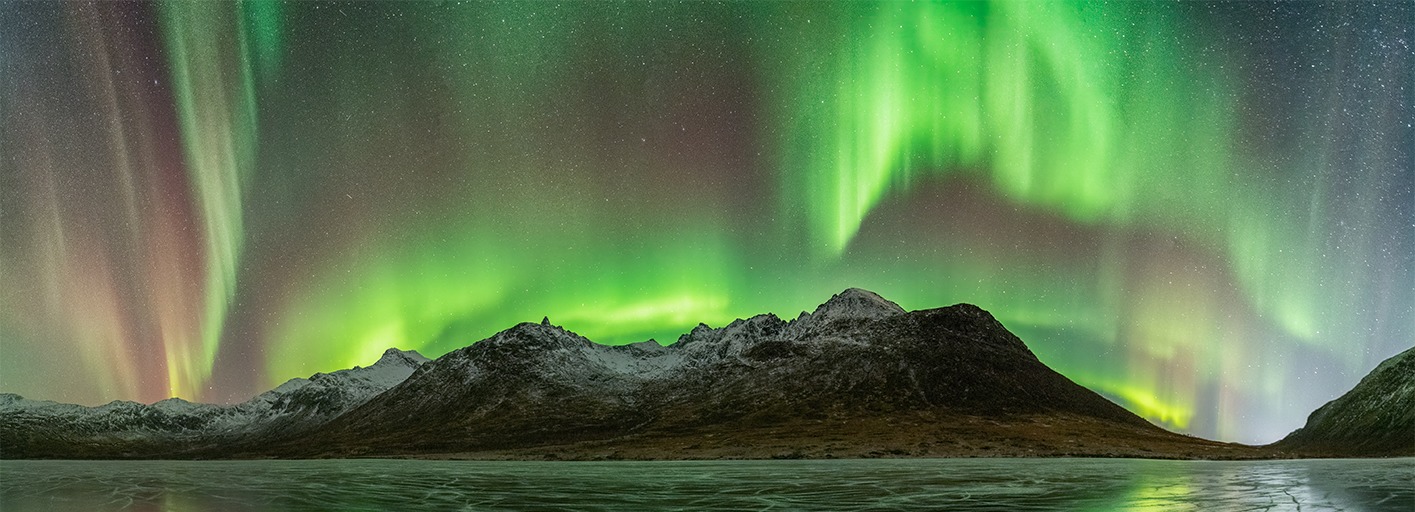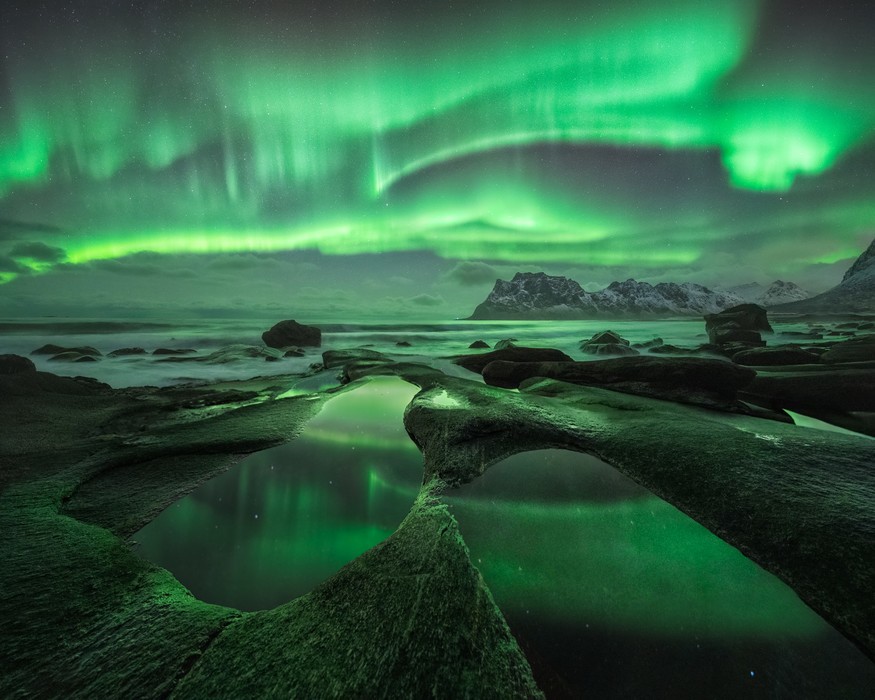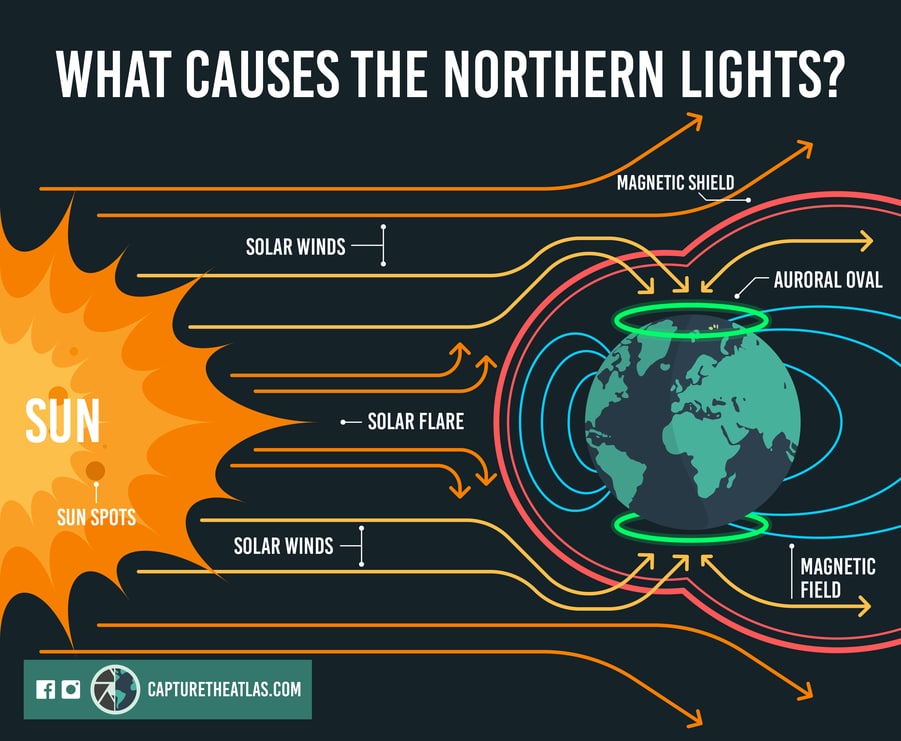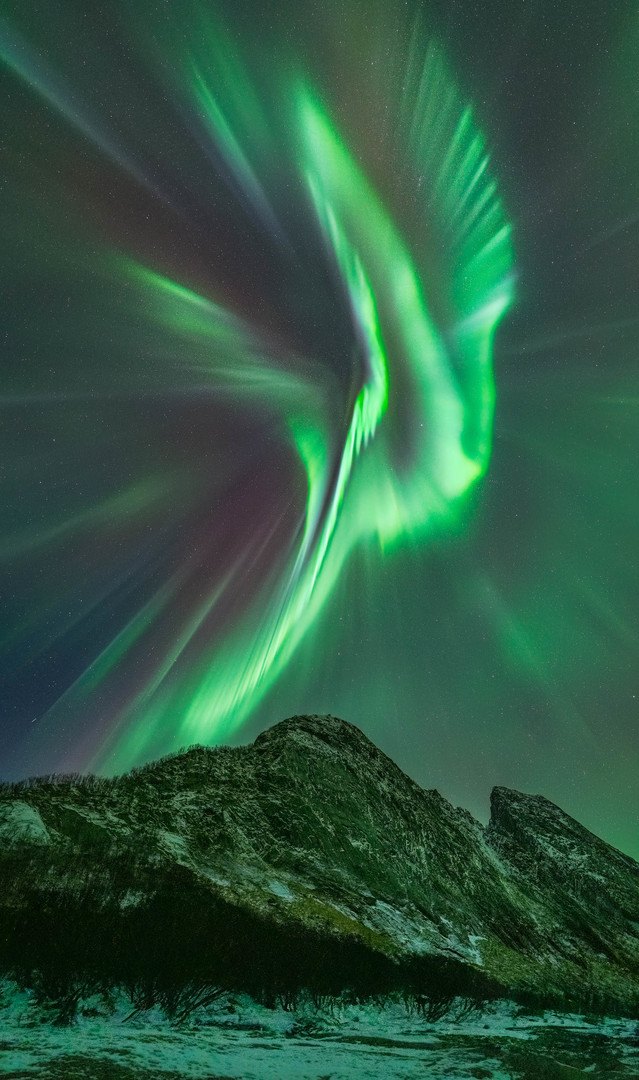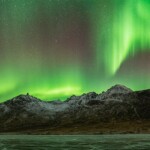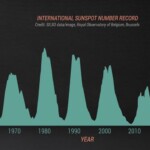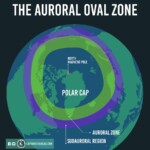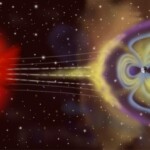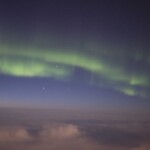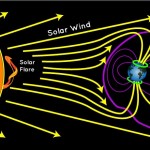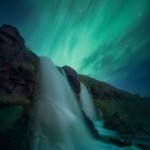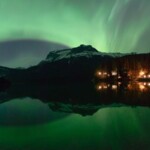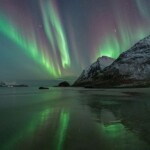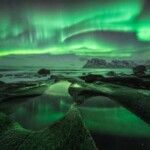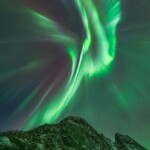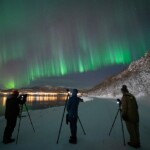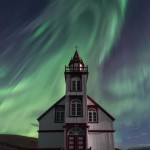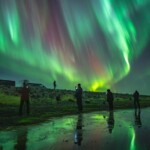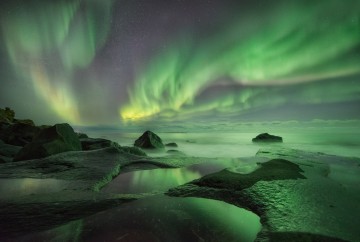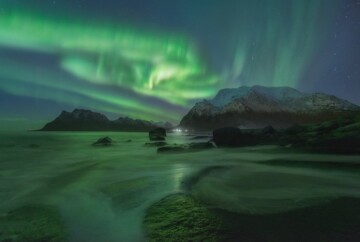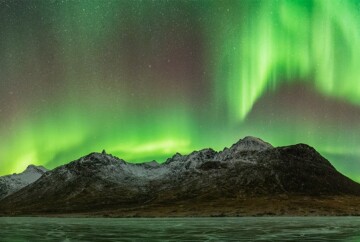The Northern Lights are one of the most spectacular natural shows on our planet, and yet, not many people know much about what they are or what causes them to happen. The Northern Lights look and feel magical – bright natural lights dancing in the night sky just look like something out of a fantasy movie; however, the science behind them is easy to understand, and that is what I’ll go through in this article.
What are the Northern Lights, and what causes them? Can you see the Northern Lights with the naked eye? Is the Aurora dangerous? Keep reading and find out the answer to all of these questions, and more!

What are the Northern Lights and what causes them?
Seeing the Northern Lights has become increasingly popular over the past few as many travelers are adding the spectacle to their bucket lists. Trips to see the Northern Lights are also in high demand thanks to the easily accessible information about this phenomenon.
As a professional landscape astrophotographer, I’ve been chasing the Aurora over the past decade all around the world. However, I started in the same place you are right now, being curious and asking myself these exact questions.
My goal in this article is to explain what exactly are the Northern Lights in an easy way and to reply to some of the most frequently asked questions I receive related to the Aurora Borealis. Are you ready to learn what makes the Northern Lights happen?
- What are the northern lights?
- What causes the Northern Lights?
- How to see the northern lights?
- When is the best time to see the Northern Lights?
- Where are the best places to see the Northern Lights?
- Other frequently asked questions about the Northern Lights
What are the northern lights?
The Northern Lights are an astronomical natural phenomenon consisting of displays of lights across the Earth’s night sky, and they are mostly visible at the highest latitudes of our planet. The Northern Lights appear mostly green in the sky, but can also show blue, pink, and red lights.
As a simple answer, the Northern Lights happen when high-energy particles from the sun (solar wind) collide with the oxygen and nitrogen atoms present in our magnetosphere. The energy released from this interaction is what produces the light we see in the sky.
What causes the northern lights?
The Northern Lights happen when protons and electrons emerging from the sun collide with atoms in the Earth’s atmosphere. These particles are diverted toward the poles by the magnetosphere as if they were magnets, and in their wake, they collide with oxygen and nitrogen atoms, producing flashes of light.
The sun constantly emits charged particles in the form of plasma. This plasma travels through space and it’s called the solar wind. This emission isn’t always constant; on occasions, solar activity may increase, causing solar flares and sun spots. When these conditions are met, we experience what we call solar storms.
During solar storms, we can see strong displays of Northern Lights made of large groups of solar particles, or Coronal Mass Ejections (CME).
How to see the Northern lights?
Seeing the Northern Lights can be challenging if you don’t know the basics. This spectacle can be elusive, and even the most experienced Northern Lights “chasers” usually go home empty-handed. But don’t let that stop you! Learning how to see the Northern Lights and chasing them is addictive, and with the right gear, you can get some breathtaking shots!
Follow these simple steps, and you’ll be well-equipped to start finding your first Northern Lights:
-
- Find out about the best season to see the Northern Lights: The Aurora Borealis can only be seen at night and at high latitudes; for this reason, some months are better than others.
- Visit any Northern Lights destination: You can visit on your own or book one of the best Northern Lights packages in the world.
- Check the Aurora and cloud forecast:
- Visit locations away from light pollution, if possible, also try to avoid a full moon.
- Looking north: if the display is strong enough, you can see the Northern Lights looking almost at any direction, but otherwise, the most likely place you’ll see them is by looking north.
When is the best time to see the northern lights?
The best time to see the Northern Lights is during the Aurora season, that is, from late August to mid-April in the Northern Hemisphere and from May to September in the Southern Hemisphere for the Southern Lights. This is because at the latitudes the Aurora can be seen, it only gets dark enough during those specific months.
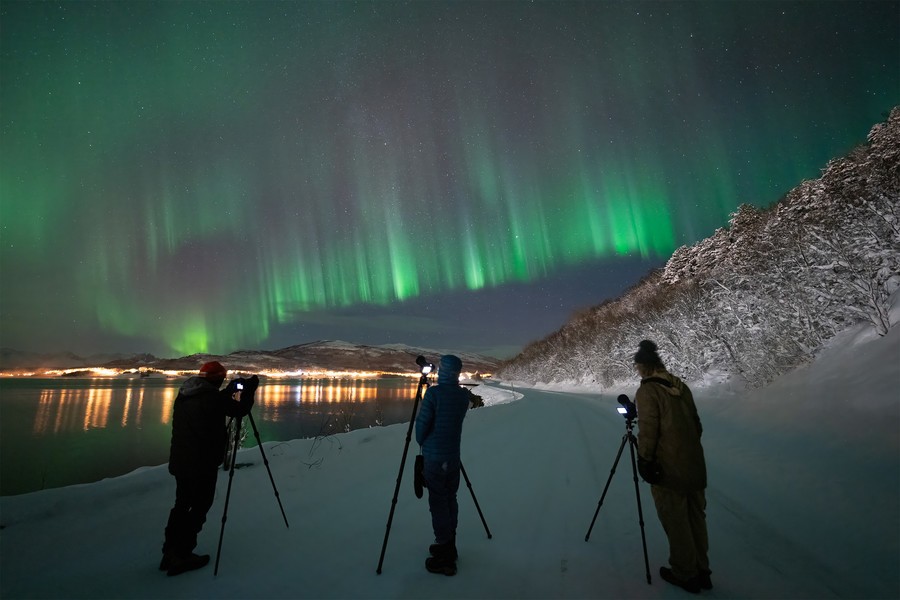
Learning when to see the Northern Lights is crucial to increase your chances of success
You can find more in-depth information in this article on when to see Northern Lights.
Where is the best place to see the Northern Lights?
The best places to see the Northern Lights are in the Auroral Zone. It’s an area located at a high latitude where the Northern Lights are more frequently visible.
In the sub-Auroral zone, the area below the Auroral zone, you can also see the Northern Lights, but you’ll need stronger solar activity.
In the following list, you can find the best places to see the Northern Lights:
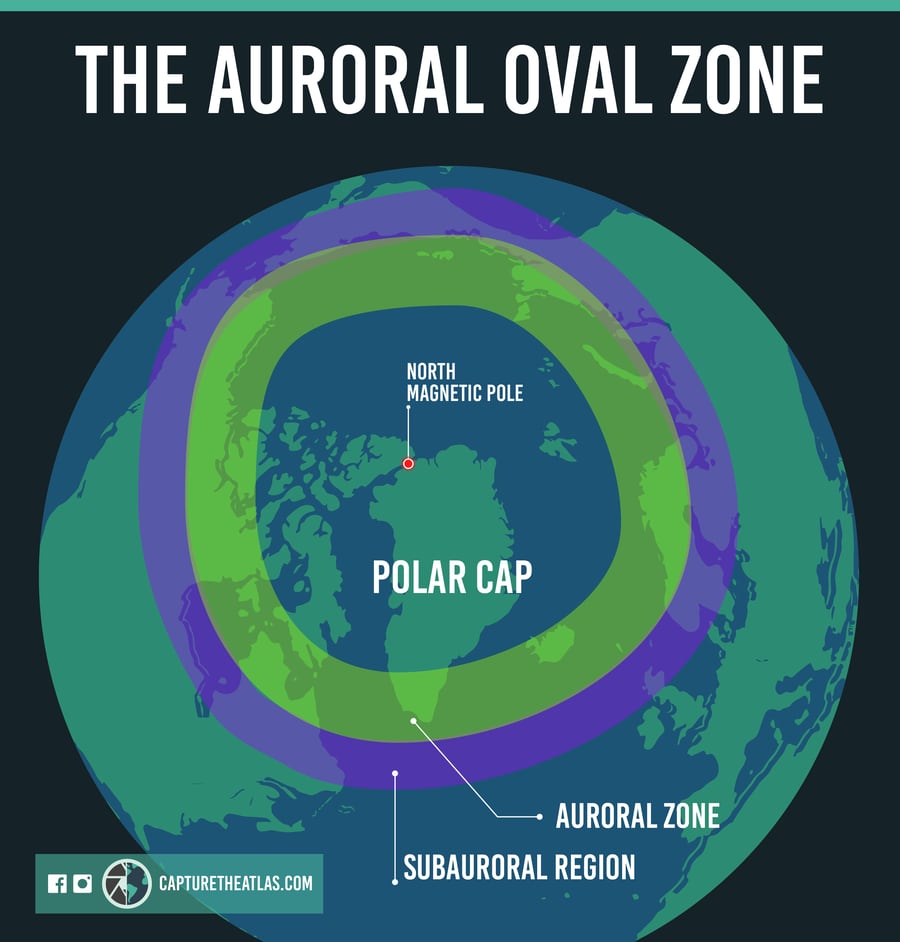
The Auroral Oval Zone
I wrote a thorough article just on the best places to see Northern Lights in the world.
What do the northern lights look like?
The Northern Lights’ look depends on solar activity and which atoms collide with protons and electrons that enter the atmosphere. The most common shapes of Northern Lights are arcs that can become more irregular as the activity increases, forming pillars, bands, and needles.
The most sought-after type of Northern Lights is called coronas, which is when the Northern Lights are right above your head and look like a beam of light.
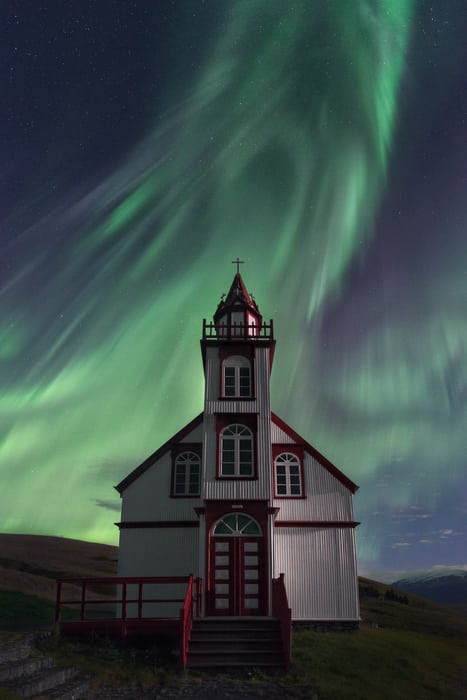
Northern Lights Corona shape
What color are the northern lights?
The Northern Lights’ color also depends on solar activity and which atoms interact with the solar wind. When the activity is low, the most common Aurora type is a faint green glow, similar to a thin cloud. When the activity increases, it is possible to see brighter greens, reds, pinks, and even blue.
Green, is associated with the impact of solar particles with oxygen atoms at an altitude from 75 to 150 miles.
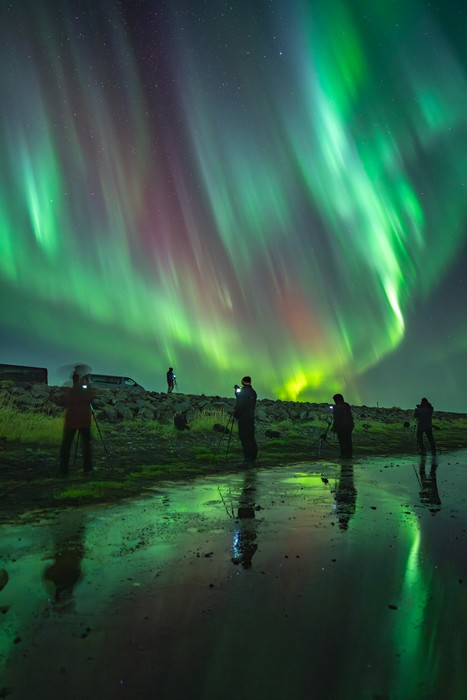
Green, yellow, lime, purple and red Aurora during a strong G2 solar storm in Iceland
Blue, purple, and pink are rarer to see and are associated with solar particles colliding with nitrogen atoms. These impacts occur at an altitude below 75 miles. Yellow and lime can be seen in higher periods of activity and are a mix of green and blue.
Red is the rarest color to see. It’s associated with solar particles hitting oxygen atoms but at a higher altitude above 150 miles.
Other Northern Lights FAQ
Conclusion
Whether you know what the Northern Lights are or not, nothing can take away from the fact that they are a mesmerizing spectacle to see. In this article, I’ve covered all the basics you need to know about what the Northern Lights are, what they look like, where to see them, etc. If you want to learn more about Northern Lights, you are in the right place because I’ve written plenty of articles over the past few years. You can start by learning how to photograph the Northern Lights or continue reading any of the related articles below.
If you have any further questions, make sure to leave them in the comment section below, and I’ll be more than happy to answer them.
